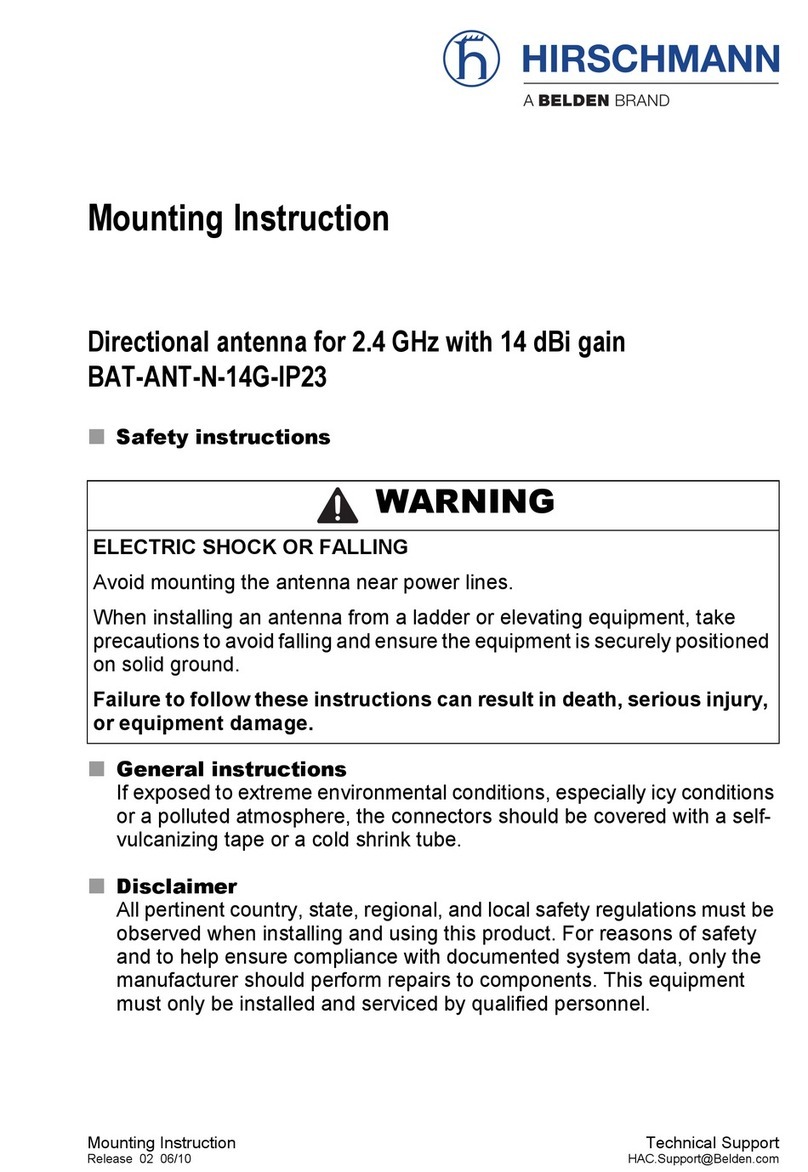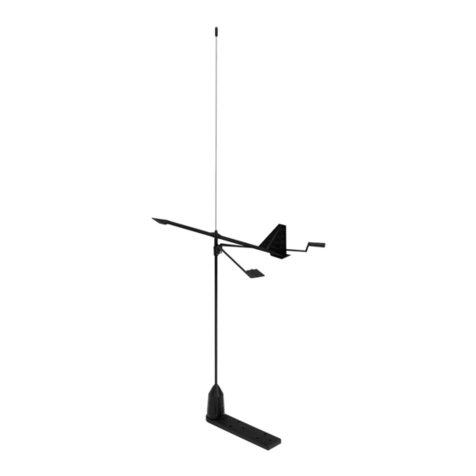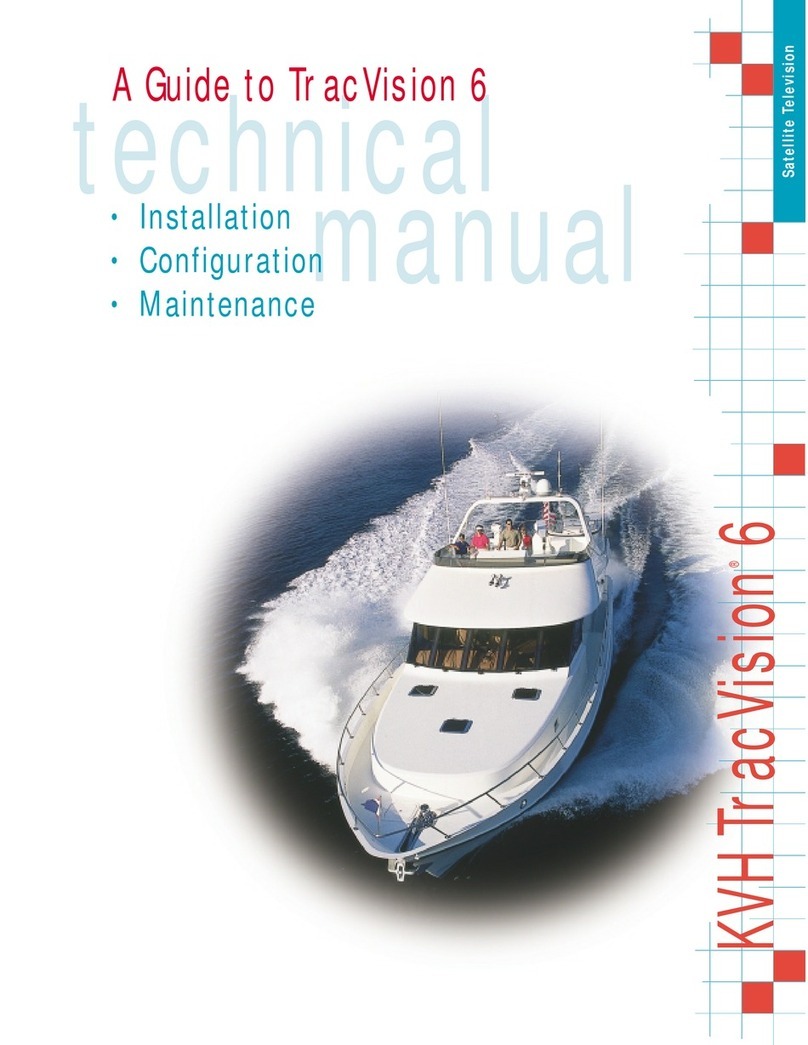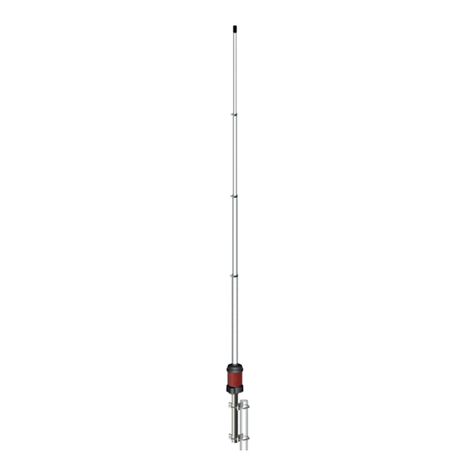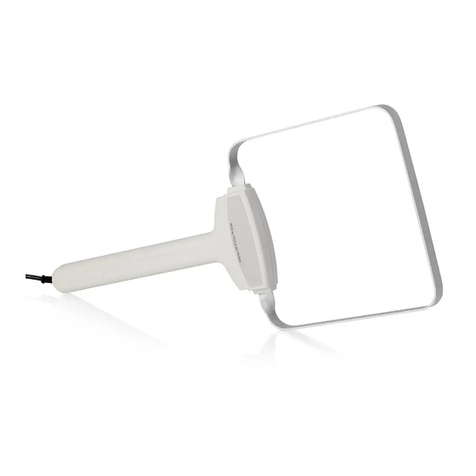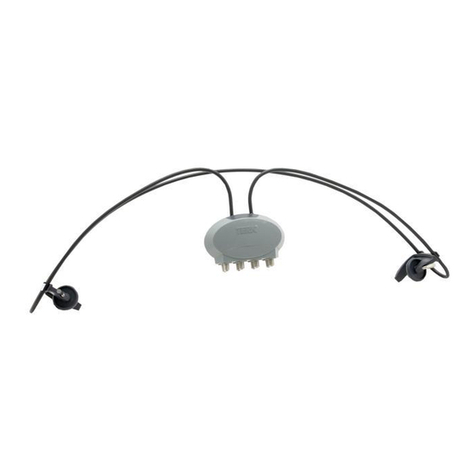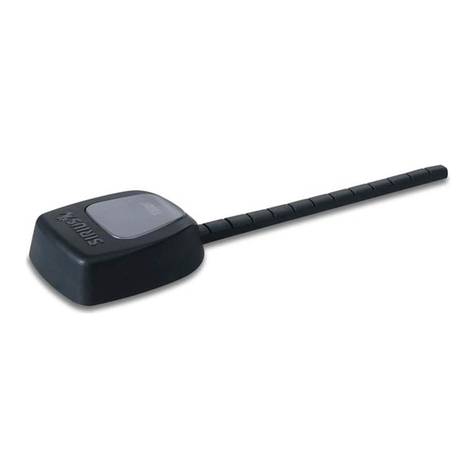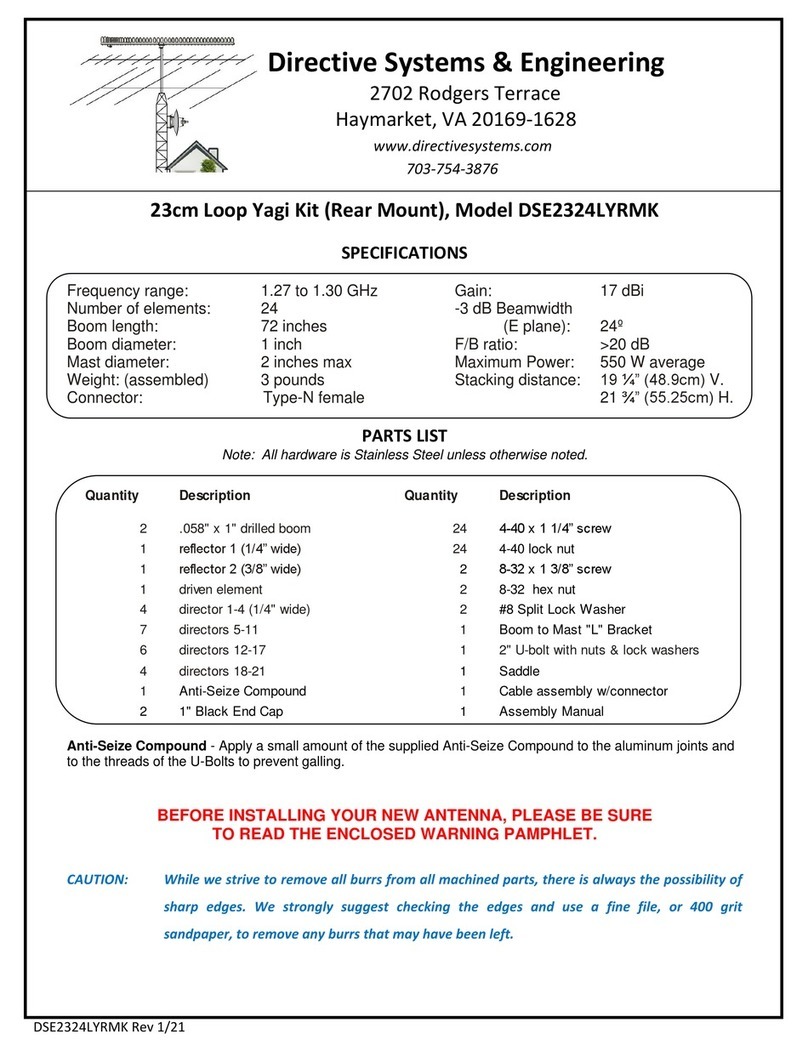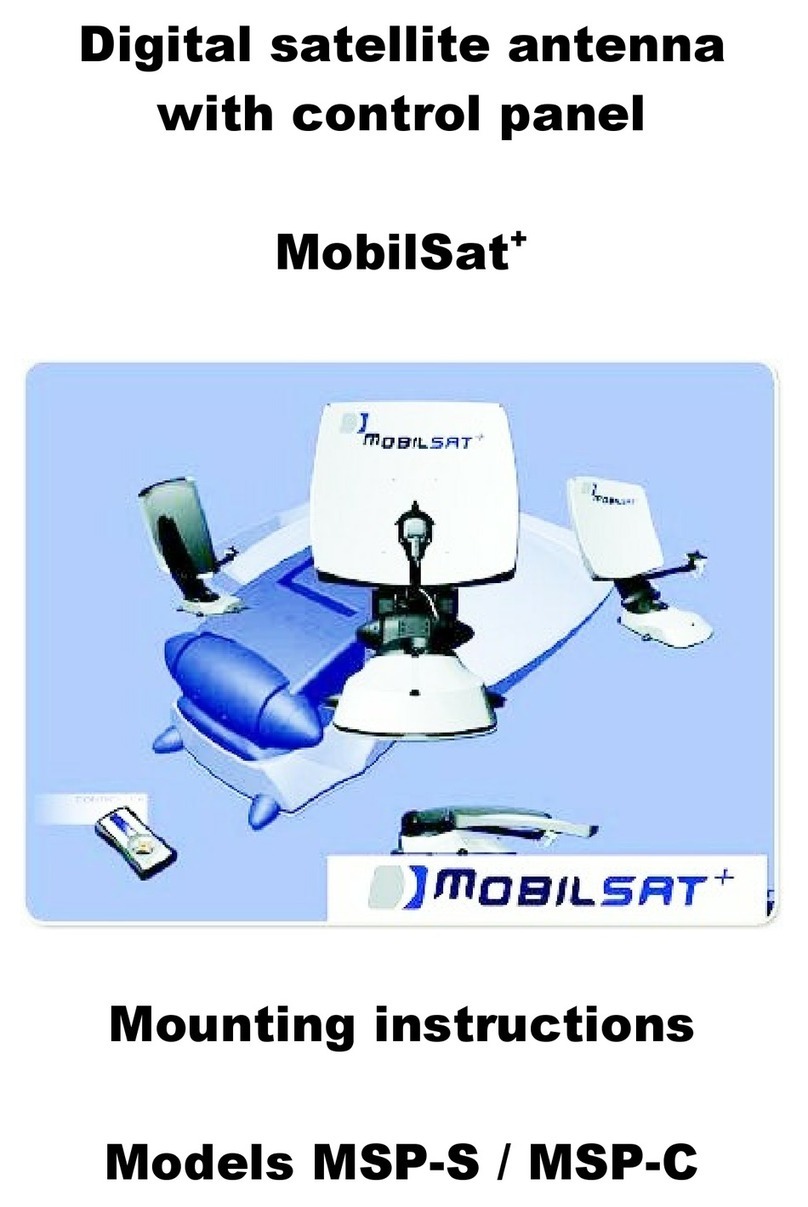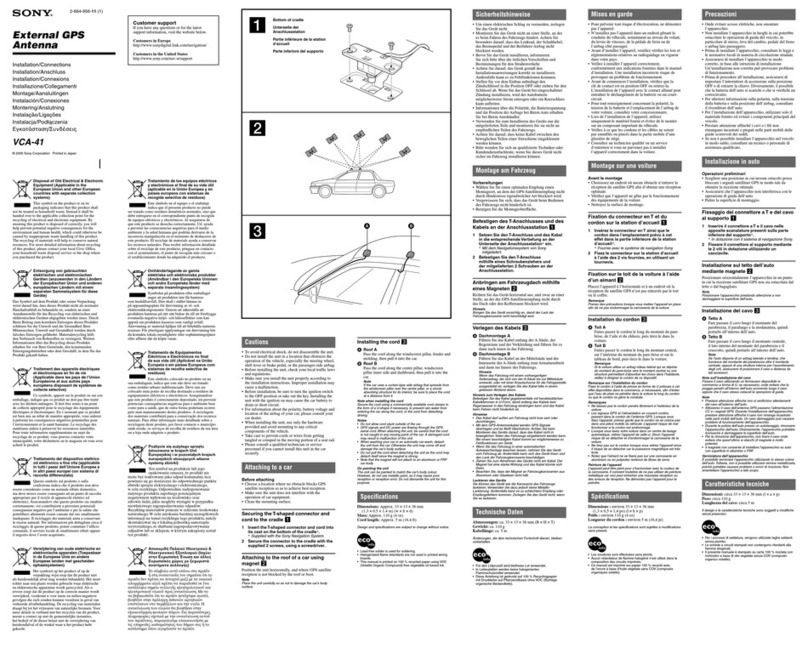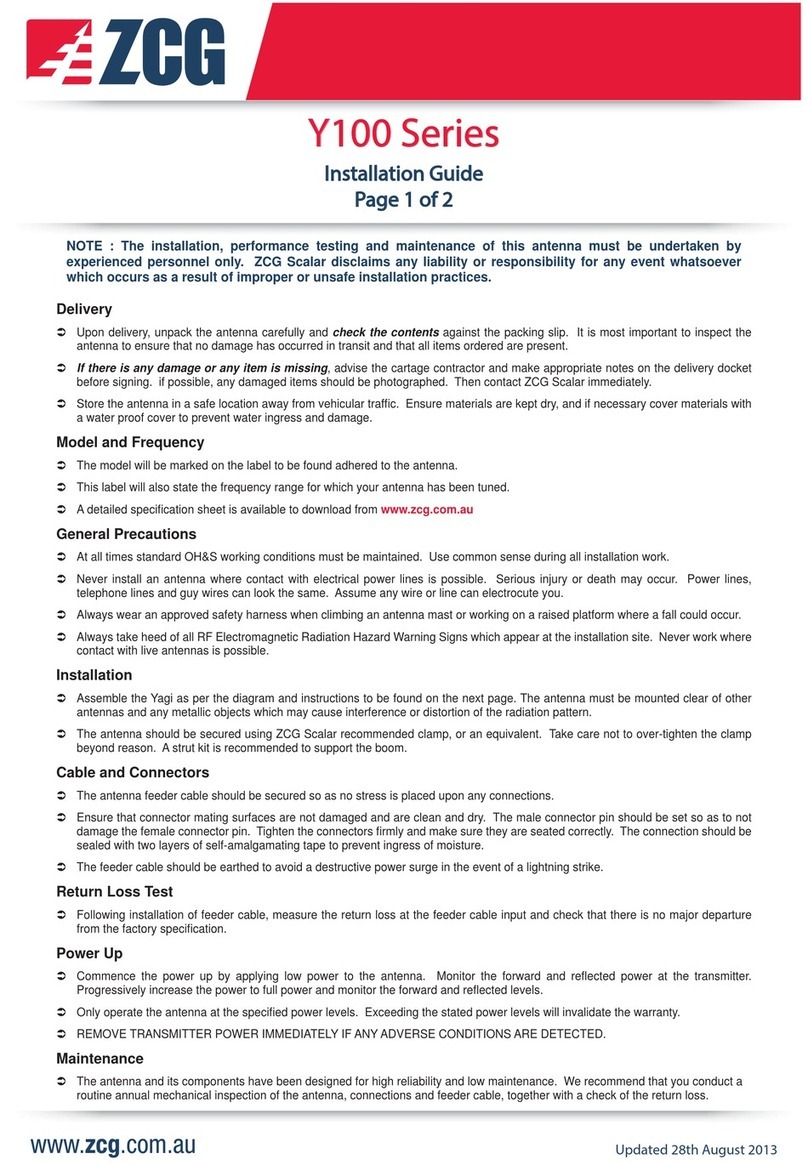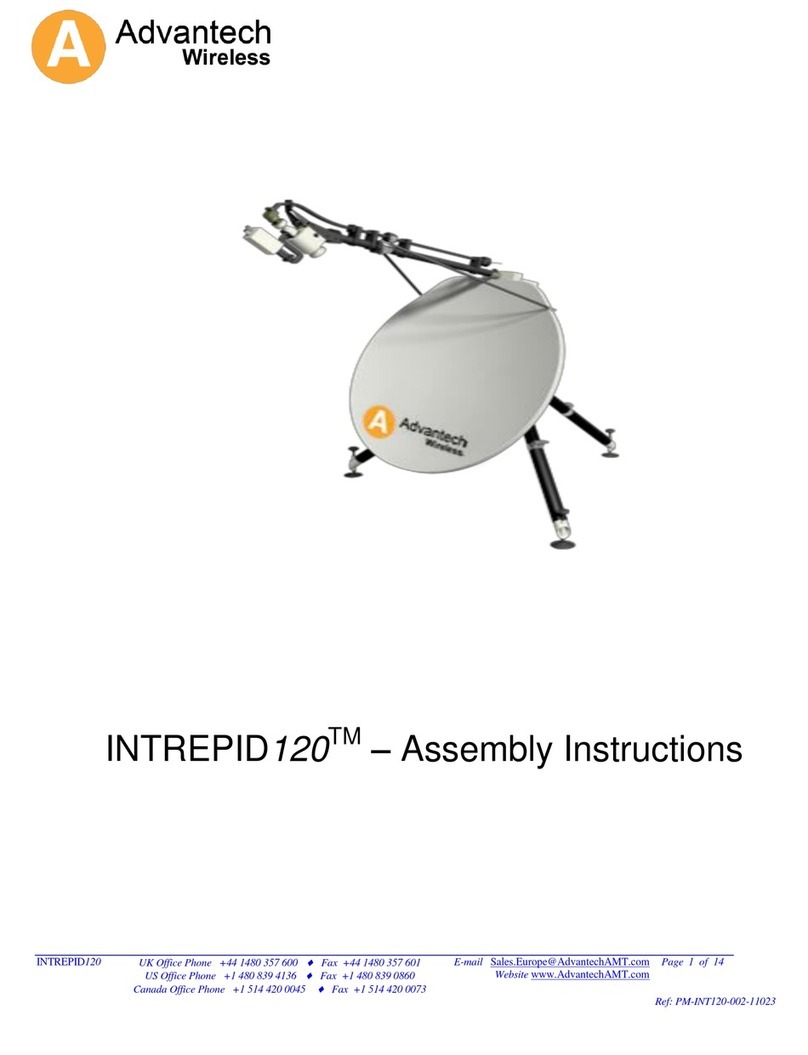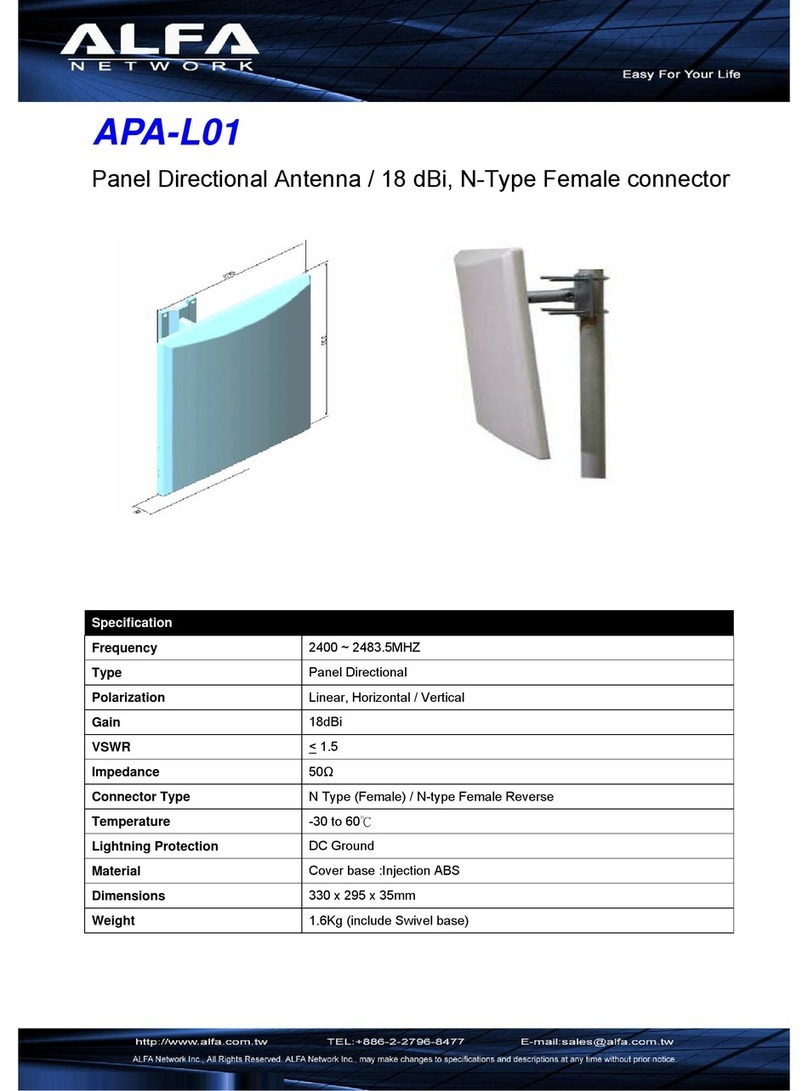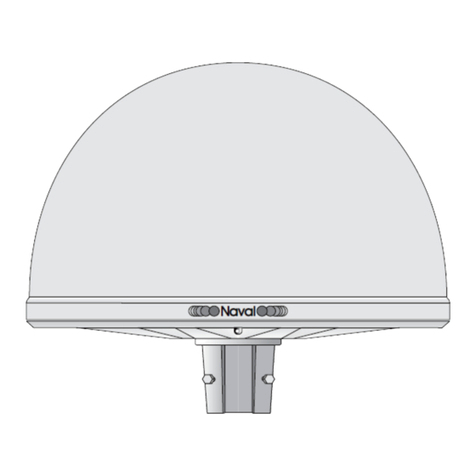
CWSI YAGI ANTENNA INSTALLATION GUIDE
1 of 6 -Confidential - Tuesday, August 02, 2011
1Introduction
This document details the typical use and installation of a directional Yagi Antenna with a CWSI CP3000
System. Yagi antennas are highly directional antennas that are typically used to provide long distance
reception and re-transmission of signals to outlying facilities that are quite far away. Typical distances
for properly aligned (vertical ) Yagi to Yagi antennas is from 3000 to 3500 feet and sometimes farther,
although these distances can vary depending upon your local installation and local conditions.
This document is provided as a guide to help determine whether a Yagi antenna may be called for and if
so the best use and location for the Yagi antennas. Our field testing has found that the yagi antennas are
best suited for unobstructed line of sight reception and transmission. When utilized in dense clustered
applications the reception radius on the sides of the antenna have not fared as well as omni antenna
reception. The following information should help you in planning your installation, but does not
eliminate the need for an on-site RF survey, which should always be performed to help ensure the best
installation prior to system installation.
2When to Consider Using Yagi Antennas
The use of a Yagi Antenna or matching Yagi Antennas should be considered when you have at least one
building that is farther than a typical Omni repeater to repeater installation can handle, which is typically
about 1100 feet when there is a clear unobstructed line of sight. The other case would be when you
have a large installation and you would like to have one direct link from the farthest point out to help
reduce the number of repeaters that the data would flow through.
3System Data Flow
The CWSI system is designed as a mesh-network that forwards data from Repeater to Repeater in such a
manner to forward data to the CP3000 main panel. If a repeater goes down the network will
automatically reroute data to other repeaters to forward data to the CP3000 provided you have
performed the signal survey to assure redundant links.
3.1 Repeater Basics
All wireless devices (smoke detectors, transmitters, manual stations) are considered slaves. Slaves
transmit their data to the local master antenna where it is acknowledged by that same master antenna.
This slave to master RF link is bi-directional. The data is then forwarded from that repeaters Slave
antenna to the next Master antenna in the chain up to the CP3000 main panel which only has a Master
Antenna.
Data flow is from slave to master.
The previous standard antennas that came with a CP 3000 or an AR-3 repeater were Omni-
directional (Omni) antennas. They receive and transmit equally in a 360 degree pattern.

